Found a total of 10000 related content
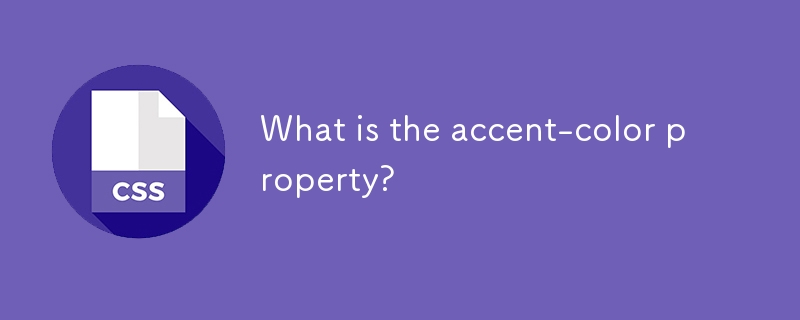
What is the accent-color property?
Article Introduction:accent-color is an attribute used in CSS to customize the highlight colors of form elements such as checkboxes, radio buttons and sliders; 1. It directly changes the default color of the selected state of the form control, such as changing the blue check mark of the checkbox to red; 2. Supported elements include input boxes of type="checkbox", type="radio" and type="range"; 3. Using accent-color can avoid complex custom styles and extra DOM structures, and maintain native accessibility; 4. It is generally supported by modern browsers, and old browsers need to be downgraded; 5. Set accent-col
2025-07-26
comment 0
795
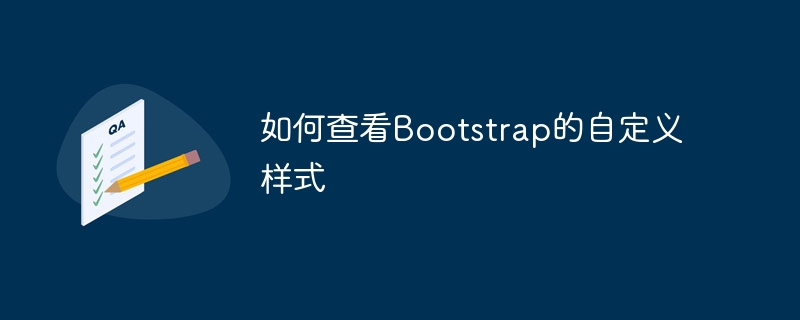
How to view custom styles of Bootstrap
Article Introduction:How to view Bootstrap custom styles? View CSS generated in Developer Tools: Provides a way to view compiled styles, but are not complete. Understand CSS priority: Custom styles take effect by overwriting or modifying Bootstrap's default styles, and use more specific CSS selectors with higher priority. Use LESS or Sass: You can directly modify the source code of Bootstrap, but you need to follow the rules and operate with caution. Check CSS loading order: Make sure the custom style file is loaded after the Bootstrap style file.
2025-04-07
comment 0
329

Top 15 jQuery Forms Examples
Article Introduction:jQuery empowers form design: improve user experience and visual effects
jQuery simplifies form design, allowing you to easily achieve various graphic designs and interactive effects. Some jQuery plug-ins can enlarge text boxes to make them more eye-catching; some plug-ins provide ready-made form templates, including basic elements such as text boxes, radio buttons, and check boxes. Related readings: 30 jQuery form plugins
iPhone Style Checkbox
Check boxes that mimic the famous switch style of iPhone. Source: http://awardwinningfjords.com/2009/06/16/iphone-style-checkboxe
2025-03-07
comment 0
737
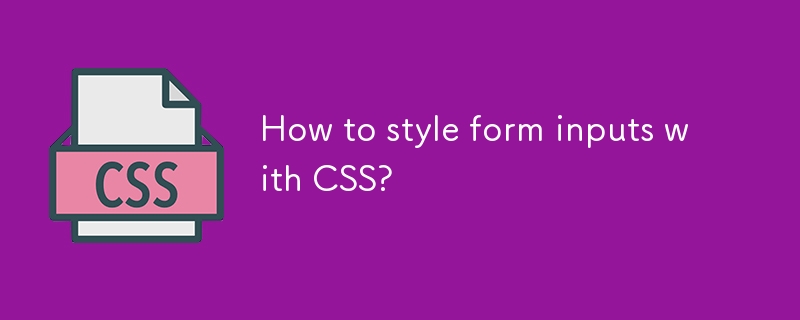
How to style form inputs with CSS?
Article Introduction:Use the type selector to define the styles of text, mailbox and password input boxes respectively, and customize the check boxes and radio buttons through appearance:none; 2. Always set borders and shadows for the :focus status to improve accessibility; 3. Customize the placeholder colors and styles through the ::placeholder pseudo-element; 4. Use the :valid and :invalid pseudo-classes to provide visual feedback on form verification; 5. Use the browser-specific prefix to hide the default controls for numeric input to ensure cross-browser consistency. These steps enable beautiful, consistent, and easy-to-use form input controls.
2025-07-29
comment 0
386
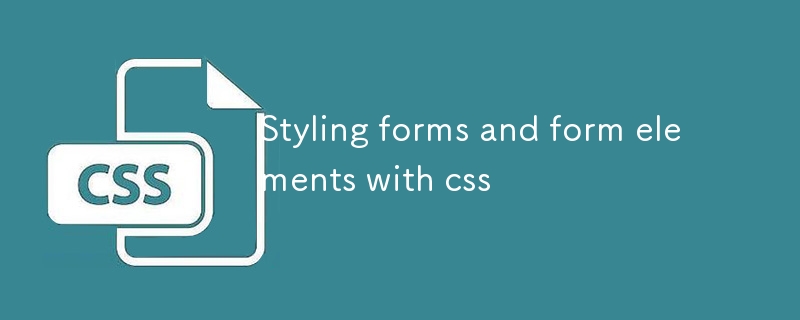
Styling forms and form elements with css
Article Introduction:To make the form more beautiful and improve the user experience, you can optimize it from the following four points: 1. Unify the basic style of the input box and add: focus effect; 2. Hide native check boxes and radio buttons and replace them with custom icons; 3. Set hover, active status and animation for the submission button; 4. Keep the form layout neatly and aligned, and use .form-group to uniform spacing.
2025-07-10
comment 0
566
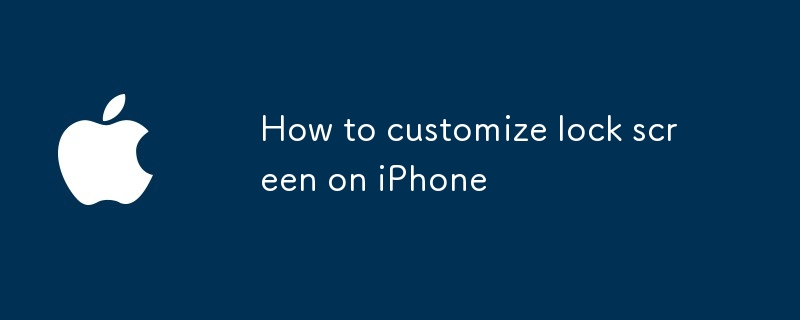
How to customize lock screen on iPhone
Article Introduction:Replacing wallpapers, adding widgets, adjusting time and date styles, and setting multiple lock screen interfaces are the core methods of personalizing iPhone lock screens. First, go to "Settings" > "Wallpaper" to replace the lock screen wallpaper, select soft pictures and check "Lock Screen"; second, click on the current style in "Settings" > "Lock Screen" to add supported widgets such as calendar, weather, etc. through "Custom Components"; then select "Custom Font" under the same menu to change the display style of time and date; finally add multiple lock screen styles through the " ", independently configure various elements and slide to switch to use to meet the needs of different scenarios.
2025-07-15
comment 0
894

How to use the `:checked` pseudo-class for checkbox/radio button styling?
Article Introduction:Use the :checked pseudo-class to customize checkbox and radio button styles based on the selection state, but because native controls are difficult to beautify directly, they usually need to be implemented in combination with other selectors or custom visual elements. The basic usage is to directly apply:checked to input, such as: input[type="checkbox"]:checked{border-color:green;}, but the cross-browser effect is limited. A more reliable way is to hide the default input and build custom controls: 1. Hide the real input (input[type="checkbox"]{display:none;}); 2. Create from
2025-07-20
comment 0
289

How to check if Bootstrap's code is correct
Article Introduction:To check whether the Bootstrap code is correct, you need to pay attention to the following aspects: HTML structure: Check whether it complies with the specifications, such as whether the correct use of container, row, and col and the addition of the number of containers is 12. CSS class name: Make sure the spelling is correct and the case is consistent to avoid conflicts with the Bootstrap style. CSS conflict: Use browser developer tools to view element styles and confirm whether they are overwritten by custom CSS. JavaScript: Check whether the plug-in JS file is correctly introduced and initialized, and pay attention to the console error message.
2025-04-07
comment 0
1028

How to implement a dark mode theme switcher in Vue
Article Introduction:Create a theme switching component, use the checkbox to bind the isDarkMode state and call the toggleTheme function; 2. Check localStorage and system preferences in onMounted to initialize the theme; 3. Define the applyTheme function to apply the dark-mode class to the html element to switch styles; 4. Use CSS custom properties to define bright and dark variables, and overwrite the default styles through the dark-mode class; 5. Introduce the ThemeSwitcher component into the main application template to display the toggle button; 6. Optionally listen to prefers-color-scheme changes to synchronize the system theme. This solution uses Vue
2025-08-02
comment 0
641
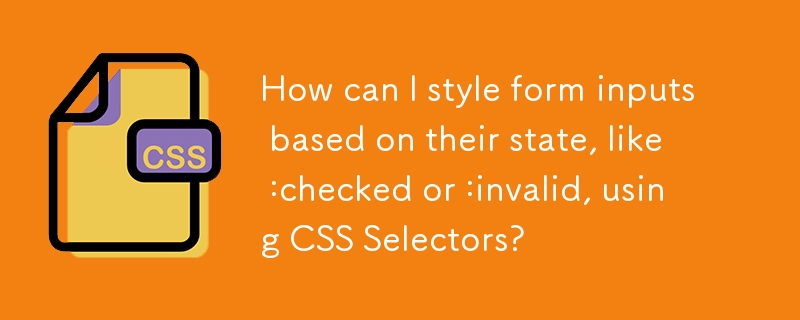
How can I style form inputs based on their state, like :checked or :invalid, using CSS Selectors?
Article Introduction:To style the different states of form input (such as selected, invalid or focused), the CSS pseudo-class should be used. 1. Use the checked pseudo-class to set styles for selected check boxes or radio buttons; 2. Use the:invalid pseudo-class to set styles for fields that have not passed the verification, combined with: user-invalid can be applied after user interaction; 3. Use the:focus and:hover pseudo-classes to enhance availability and accessibility; 4. Multiple pseudo-classes can be combined to implement multi-state style design, such as matching invalid and focused states at the same time. These methods can achieve dynamic style changes without JavaScript.
2025-07-01
comment 0
813
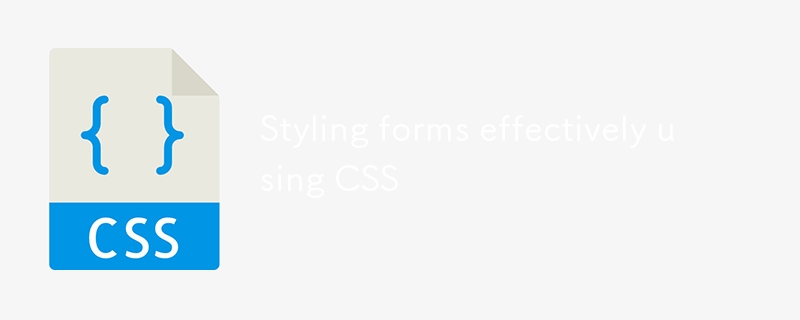
Styling forms effectively using CSS
Article Introduction:Style the form through CSS to improve user experience and unify the page style. The specific methods are as follows: 1. Use universal reset styles to unify the appearance of form elements, and use flex or grid layout to optimize the structure to make the form items clearly arranged; 2. Use pseudo-classes such as: focus, :hover, :invalid and :valid to enhance state feedback and improve interactive intuitiveness; 3. Use native controls to hide native controls and simulate custom controls (such as check boxes) to improve visual consistency and better match the overall design style.
2025-07-06
comment 0
293

Bootstrap in Plain English: Simplifying Web Development
Article Introduction:Bootstrap is an open source front-end framework that simplifies web development. 1. It is based on HTML, CSS, JavaScript, and provides predefined styles and components. 2. Use predefined classes and JavaScript plug-ins to implement responsive layout and interactive functions. 3. The basic usage is to introduce CSS and JavaScript files, use classes to create navigation bars, etc. 4. Advanced usage includes custom complex layouts. 5. Check the introduction of class names and files during debugging and use developer tools. 6. The optimization suggestion is to only introduce necessary files, use CDN, and use LESS or Sass when customizing.
2025-05-04
comment 0
893

How to bind form inputs in Vue?
Article Introduction:v-model is used in Vue to implement bidirectional data binding for form input. 1. The text box binds string values through v-model; 2. The usage of multi-line text boxes is the same as single-line text; 3. The single check box binds boolean values; 4. Multiple check boxes bind the same array to collect selected values; 5. The radio button group binds the same data attribute to record the selected items; 6. The drop-down box supports single-choice and multiple-choice, binding strings or arrays respectively; 7. Provides modifiers such as .trim, .number, and .lazy to handle common input scenarios. The essence is: syntax sugar of value and @input, and can expand behavior in custom components to ultimately realize automatic synchronization of data and views.
2025-07-29
comment 0
923
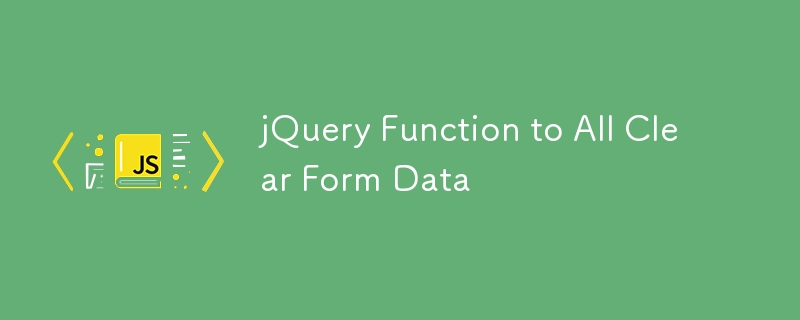
jQuery Function to All Clear Form Data
Article Introduction:This article describes several practical ways to use jQuery to clear form data from Karl Swedberg's website. These methods can clear all data in the form, including text input boxes, drop-down lists, radio buttons, check boxes, etc.
Method 1: General Function
The following function iterates through all input elements in the form and clears their data according to the element type:
function clearForm(form) {
$(':input', form).each(function() {
var type = this.type;
var tag = this.tag
2025-03-02
comment 0
702

How to customize the Markdown preview style in VSCode?
Article Introduction:There are three steps to customize the Markdown preview style in VSCode: 1. Create a .vscode folder and add a CSS file; 2. Configure the CSS file path in the settings to apply the style; 3. Use plugins to enhance customization capabilities. After specifying the custom CSS file path by setting Markdown:Styles, you can modify font, color, paragraph spacing and other styles. Common adjustments include setting body font size, code block background color, and title style. Plugins such as "MarkdownPreviewEnhanced" provide more theme and syntax highlighting functions, and support local CSS or CDN style sheets. You can check the path and use it during debugging!i
2025-07-26
comment 0
702
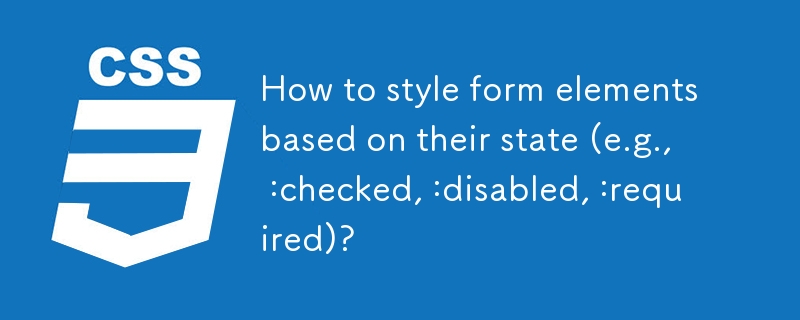
How to style form elements based on their state (e.g., :checked, :disabled, :required)?
Article Introduction:The state style of form elements can significantly improve the user experience, and through visual feedback, users can clearly understand the option status, required items and disable effects. 1. Use: checked pseudo-class to highlight the selected items, and personalize check boxes or radio buttons by hiding native controls and customizing styles; 2. Use: disabled pseudo-class to make the disabled state more intuitive. Common methods include reducing transparency, changing background color and setting the non-clickable cursor; 3. Use: required pseudo-class to identify required items, usually combining border color and red asterisk prompts, and it is recommended to enhance accessibility with text or icons; 4. Pay attention to the casing order when multiple states coexist. It is recommended to follow the default, hover, focus, active, and disabled.
2025-07-14
comment 0
738

how to create an index in Word
Article Introduction:The key to creating an index in Word is to mark keywords and automatically generate a list. The specific steps are as follows: 1. Select the keyword and click "Tag entry" to set the main keyword and subkeywords; 2. Select the built-in format or custom fonts, columns and other styles in "References"; 3. Insert the index to the end of the document, and press F9 to update the domain through the selected document to synchronize the content; 4. If the index does not respond, check whether the tag or update is missing. There are too many keywords to classify the sub-entries, and the sorting language can be set to Chinese. Master these steps to efficiently complete index settings.
2025-07-12
comment 0
753

How to add a checkmark symbol in Excel
Article Introduction:There are three ways to insert a check mark in Excel: First, through the caret function, find the ? insertion in the [Special Character] tab or switch fonts such as Wingdings2; second, use shortcut keys, such as press Alt 0252 to enter ? under the Wingdings2 font, or custom shortcut keys to automatically correct; third, set automatic correction substitution characters, and automatically replace common codes such as (c) or chk with ?, which is suitable for frequent use scenarios. In addition, to ensure normal display, it is recommended to use common fonts and explain the fonts used in advance, or save them as cell styles to manage them uniformly.
2025-07-30
comment 0
264

How to make form input fields mandatory using html attributes?
Article Introduction:The most direct way to make the input box in the HTML form required is to use the required property. This property is a Boolean type, and no value is required. It can be used to verify it on the input, select or textarea tags, such as:; Common matching types include text, email, password, etc.; for checkbox, directly add required to force check; in the radio button group, just add required to the first option; the select drop-down box needs to set the default empty value option to trigger verification; different browsers may have different styles and contents of prompt information. If a unified prompt effect is required, you can customize it with JavaScript or third-party libraries for customization.
2025-07-07
comment 0
787

Vanilla Javascript: Creating Animated Sticky Navigation Menu
Article Introduction:Core points
Create an animated sticky navigation menus without the need for a jQuery plugin using pure JavaScript, CSS, and HTML. The menu is designed to slide out of view when scrolling down and slide back into view with a translucent effect when scrolling up.
This process involves setting up the basic HTML structure, applying styles to main elements, and then animateing the menu. The animation is triggered by attaching the event handler to the scroll event and using CSS transformation to adjust the position and appearance of the menu according to the scrolling direction.
This custom solution provides more design flexibility and allows easy customization to be done according to specific needs. The end result is a dynamic interactive navigation menu that enhances the user experience.
Web navigation menu design needs to consider many factors, such as dishes
2025-02-16
comment 0
1163



















